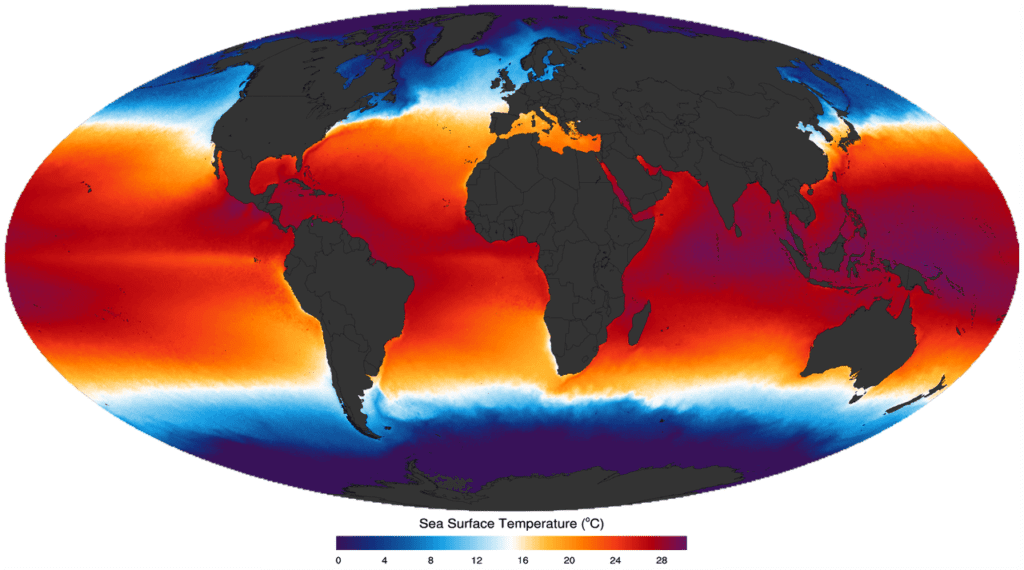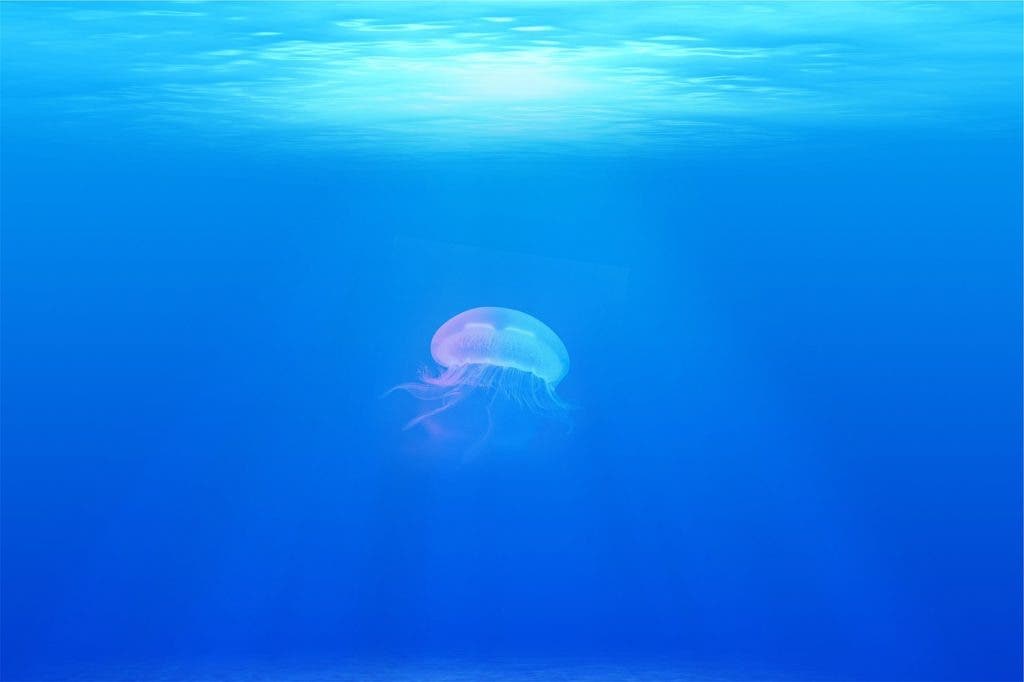A new study published in the science journal Nature reports that the ocean’s oxygen levels have dropped by more than 2% between 1960 and 2010 — and climate change is only a part of the picture.

Oceans are getting hotter, and they’re also losing oxygen. Credits: MODIS Aqua sea surface temperature 2003-2011 average.
Losing oxygen
Oxygen is a vital requirement both on land and in the sea. Ocean dwellers need oxygen just as we do, and lack of available oxygen can have dire consequences. In this study, oceanographers Dr. Sunke Schmidtko, Dr. Lothar Stramma and Prof. Dr. Martin Visbeck from GEOMAR Helmholtz Centre for Ocean Research Kiel, analyzed data on ocean salinity, temperature, depth, and oxygen since 1960 from several databases, and mapped it around the world. The startling discovery emerged when they mapped out oxygen — 80 billion metric tons, or 2% of the total oxygen in the oceans, was gone.
“We were able to document the oxygen distribution and its changes for the entire ocean for the first time. These numbers are an essential prerequisite for improving forecasts for the ocean of the future,” wrote Schmidtko. “Since large fishes in particular avoid or do not survive in areas with low oxygen content, these changes can have far-reaching biological consequences,” Schmidtko, the lead-author of the study adds.
While 2% might not seem like much, it really is. Even slight changes can have domino effects and can severely threaten the well-being of marine life. No one is safe from an oxygen depletion except for some bacteria.
“Just a little loss of oxygen in coastal waters can lead to a complete change in ecosystems — a small decrease in oxygen like this can transform from something desirable to very undesirable,” said David Baker, Assistant Professor at the University of Hong Kong’s Swire Institute of Marine Sciences.
This is the first time oxygen depletion was quantified for the oceans. Oceanic data is typically more sparse and the gaps are hard to fill in.
“To quantify trends for the entire ocean, however, was more difficult since oxygen data from remote regions and the deep ocean is sparse,” explains Dr. Schmidtko, “we were able to document the oxygen distribution and its changes for the entire ocean for the first time. These numbers are an essential prerequisite for improving forecasts for the ocean of the future.”
Like with climate change itself, this depletion is not uniform, and some areas are affected more than others. All areas experienced some oxygen loss, but the North Pacific experienced the biggest losses.
Causes
As it so often happens these days, climate change is one of the culprits — but surprisingly, it’s not the biggest one. Just 15% of this depletion can be attributed to rising temperatures. Oxygen is dissolved into water, and as temperatures rise, the ocean loses its ability to hold said oxygen. This has another cascading effect. Not only does oxygen escape from the surface, but rising temperatures also decrease the density of surface water, making it unlikely for new oxygen to be transported to the deeper parts of the ocean.
“It’s almost like the oceans are getting ready for a heart attack,” said Baker. “You’re essentially slowing the heartbeat of the ocean, and you’re getting less oxygen to the ocean.”
Another significant cause here is the melting of sea ice, which leads to more plankton growth. More plankton means more plankton decomposition, which further decreases the oxygen levels. The study also mentions “dead zones” — low-oxygen areas in the ocean’s shallow waters — multiplying around the world’s oceans. These areas are pumping a greenhouse gas which further amplifies climate change. Fertilizers running into the ocean encourage algal blooms which greatly contribute to the development of these zones. Yet all in all, the causes of this oxygen depletion remain very difficult to gauge and further research is still required to get the whole picture.
The writers conclude the study on a pessimistic note, stating that “far-reaching implications for marine ecosystems and fisheries can be expected.” They also foreshadow what might come
“The oceans are really a mirror of human health — if they’re sick and dying, then that’s the future of humanity as well,” said Baker.










